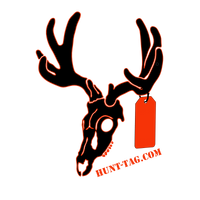
Oregon Hunting 2019: E-Tagging VS. Paper Tagging
If you plan on hunting or fishing in Oregon during the 2019 seasons you may want to pay some attention to the changes the Oregon Department of Fish and Wildlife (ODFW) has made to the way hunters and anglers buy, apply, and use hunting/fishing tags and licenses. You can find more information and an introduction to the new Electronic Licensing System here. If you have tried to figure out all the changes and new tagging requirements but still have questions, you are likely not alone. This will be quite the transition year for all Oregon hunters and fisherman, as well as the ODFW and Oregon State Police (OSP). It will likely take some time to work out all the bugs and get used to the new system, but all hunters and anglers should be aware that the requirements for tagging your harvest in the field have changed too. So, if you want to stay legal this year you may want to pay attention.
What is particularly important to note is that you will be faced with a decision when it comes time to buy your Oregon hunting/fishing license and tags for 2019. The questions is, will you be e-tagging (electronic tagging) or paper tagging this year? This decision will determine how you will need to tag your harvest once you have been successful.
Electronic Tagging (E-Tagging)
If you choose e-tagging, you will be required to use the ODFW App on your smartphone to tag your harvest and provide proof of tags and licensing should you be stopped by an OSP officer. This means that when you have harvested an animal you will need to have your smartphone with you and have enough battery to 'Validate' your tag. You will also be responsible for ensuring your phone has enough battery life that you can present your hunting/fishing information to an officer if you are stopped in the field. On top of that, you still need to attach some specific information to any harvested big game animal including deer, elk, antelope, bear, cougar, and turkey. The following information is required to be securely attached to the harvested animal:
- Your Name
- Date of Birth
- ODFW ID#
- Harvest Date
- Confirmation Number (which you will get when you validate your tag on the ODFW App)
This information needs to be written on anything that will stand up to the elements and affixed to the animal as you would have done with a paper tag last year. The ODFW recommends using something like duct tape, flagging ribbon, or paper in a plastic bag. Or... you could use something like the Oregon Hunt-Tag System: E-Tag kit, so you don't have to remember all the required information and end up writing some chicken-scratch on a backup piece of TP stuffed in mustard stained zip-lock with the remnants of your bologna sandwich from 2 days ago. Not that you couldn't just use duct tape or flagging ribbon as suggested, the fact is that this information is now required to properly and legally tag your harvest and the Hunt-Tag System is just a simple tool to make it a little easier.
Paper Tagging
Now, if you choose paper tagging as your method, the tagging requirements will be similar to how they have traditionally been, but with a few changes you should be aware of. For starters, if you go to an ODFW license agent like Cabela's or other sporting good stores and choose paper tagging your tags will be printed out and handed to you as they have in the past. However, now tags and licenses are printed on standard 8.50" X 11.00" paper instead of the waterproof paper that had been provided in years past. The ODFW is expected to save around $2 million with the elimination of the special paper and associated computer equipment. This is where the cost now falls to the customers of ODFW in that they will now need to print their own tags if purchased online through the MyODFW licensing page. You will also need to ensure that these paper tags stay dry and legible to be able to properly tag your animal. Furthermore, to legally tag your harvest you will need to write in ink the following information down on your paper tag:
- Harvest Date/Time
- Wildlife Management Unit where the harvest occurred
The tag should then be placed in a plastic or waterproof bag and affixed to the carcass. Luckily, Hunt-Tag has you covered for paper tagging as well with the Oregon Hunt-Tag System: Paper Tag Kit. The paper tag kit comes with a few essential items for attaching and filling out your tags as well as waterproof bags to keep your tags safe from the elements.






